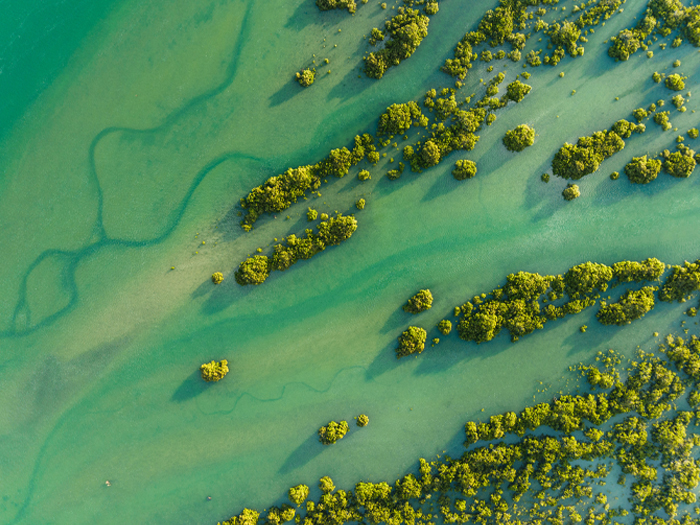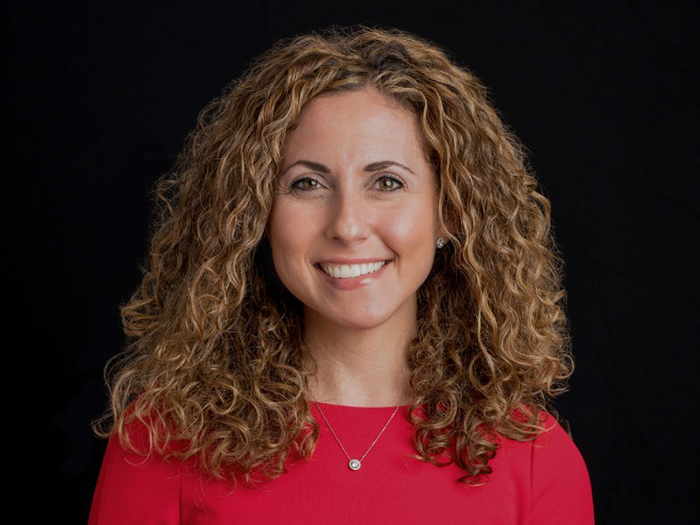How Blue Bonds Are Saving Emerging Economies — and Their Marine Ecosystems

In countries whose economies are still developing, high sovereign debt can present a barrier to government spending — even spending that might help improve their financial situation. And when essential services are underfunded, marine conservation can appear more like a “nice-to-have” than a “must-have.”
But these same countries are often home to fragile marine ecosystems that play a vital role in their economies.
Blue bonds are an emerging strategy to help reduce the burden of sovereign debt in countries with developing economies and funnel those savings into marine conservation programs that benefit wildlife, the national economy — and the health of the planet.
Greening the Wild Blue Yonder
Belize is a relatively small Central American nation of roughly 400,000 people. In 2022, its debt-to-GDP ratio was estimated at 113%. But Belize is also home to the second-longest barrier reef in the world — a UNESCO World Heritage Site since 1996 that includes an atoll considered one of the best diving sites in the world.
While Belize’s debt per se was not considered investment-grade, AXA XL worked to lead other private political risk insurance companies to reinsure a blue bond loan that could achieve an investment-grade rating.
With a loan of $364 million from Credit Suisse, AXA XL’s blue bond partners were able to purchase $553 million of Belize’s debt. The U.S. International Development Finance Corporation underwrote primary political risk insurance on the loan, and AXA XL led other carriers in providing support in the form of $610 million in facultative reinsurance.
This ultimately reduced Belize’s overall debt burden by $250 million — funds needed to help preserve the country’s fragile marine ecosystems. The debt swap effectively tripled the country’s budget for marine conservation for the next 20 years, enabling it to protect its reef system and its tourism-based economy.
The latter speaks to a secondary benefit of blue bonds: While the intention is to protect marine environments, this can in turn support tourism and strengthen a country’s economy.

Stuart Barrowcliff, underwriting manager, political risk, credit and bond, AXA XL
Such was the case with a blue bond designed to help protect Ecuador’s Galapagos Islands.
“In the case of the Galapagos, the tourist economy is super important. You don’t want the place to be spoiled, because then you lose the attraction for the tourists,” said Stuart Barrowcliff, underwriting manager, political risk, credit and bond at AXA XL.
“You’re protecting fishing grounds, you’re protecting things that are important from an economic perspective,” he added. “There’s definitely an overall economic benefit for the country in protecting these resources.”
While powerful, “this isn’t a solution that works everywhere,” Barrowcliff conceded. “It works for certain countries that have the economic profile, and have a need and the interest.”
Blue bonds are typically initiated by conservation groups familiar with local needs and conditions, but it ultimately takes a host of different stakeholder partners to fund, insure and facilitate a debt swap.
“But it really kind of grows organically from the country’s relationships with NGOs that that are involved in conservation,” said Barrowcliff. “Probably the most famous one is The Nature Conservancy.”
For the Greater Good
Ultimately, the benefit of blue bonds isn’t limited to the countries receiving a debt swap, or even the blue bond’s stakeholders. The carbon cycle is truly global, and improvements to marine conservation in one country can benefit the entire planet.
The West African nation of Gabon may not be top-of-mind when thinking about ways to mitigate greenhouse gases, but “it’s a really, really important carbon sink,” Barrowcliff said. “There’s a really large rainforest environment there,” in addition to 550 miles of coastline home to humpback whales and the world’s highest concentration of leatherback sea turtles.
Gabon has pledged to conserve 30% of its ocean and lakes by 2030, a goal now facilitated by a blue bond. A special-purpose vehicle was devised to issue blue bonds and restructure roughly $500 million of Gabon’s debt; here again the U.S. International Development Finance Corporation underwrote political risk to protect bondholders in the cause of non-payment on the part of Gabon’s government, with AXA XL the lead reinsurer.
This move is expected to free up $163 million over the life of the loan, which will help to further Gabon’s marine conservation goals.
“Gabon had less of a discount and better credit,” Barrowcliff said. “There was some commentary about ‘Should it be called a blue bond, because how much of the savings were channeled into it?’ But at the end of the day, every country is different … What it did was it created cash flow and funding for conservation commitments in Gabon.”
Putting the Puzzle Together

Lian Phua, head of Americas, political risk, credit and bond, AXA XL
From the insurer’s perspective, said Lian Phua, head of Americas, political risk, credit and bond at AXA XL, blue bonds are an opportunity to help all the stakeholder organizations — the governments involved, NGOs, investment banks, development finance agencies and, of course, insurers — advance their own commitments.
“It’s not just supporting one client,” Phua said. “We’re actually helping other clients or other stakeholders that we’re working with support their ESG efforts.”
Once they’ve identified an opportunity to use a debt swap to generate savings on a country’s outstanding debt, the next challenge is implementing it in such a way that those savings are channeled into a commitment to an expanded conservation program.
“You’ve got impact investors out there, and you have funds, philanthropic and others, that are interested in doing this type of thing,” Barrowcliff said. “And these deals are very long. We’re talking 15 years, 18 years.”
Risk must be allocated to the right parties — public sector entities with developmental mandates, multilateral development banks, impact investors and others — each of which needs to see that risk allocated in a way they’re comfortable with. “And that creates a risk profile that the impact investors can then accept. It’s really a task of figuring out how to create this risk profile and allocate risk appetite.”
Because the timelines are so long, conditions on the ground often change before the transaction can be completed. “Some of these take years from the initial conversation to actually go into a policy binding,” Phua said. “We get updates constantly about elements of the transaction that have changed — maybe the size has changed. Maybe the tenor has changed. Maybe some of different parties involved have changed.”
The result, Phua explained, is that components of the deal need to be reanalyzed with each change until the picture becomes clear on what is achievable.
“In Ecuador, [the terms] actually improved, because the discount became greater by the time we put the deal into the market,” Barrowcliff said. “It was even more impactful, because we bought back the targeted amount of debt, but it cost less because of the discount. That one moved in favor of the economics of the transaction.”
What sets blue bonds apart from a standard debt swap, apart from their ESG goals, is that each country’s marine conservation commitments represent a binding term; defaulting on a commitment to finance conservation efforts constitutes a default on the debt itself. It’s for this reason that the close involvement of an NGO is so critical.
An Eye on the Horizon
While blue bonds aren’t a panacea, Barrowcliff said, “it’s something that we expect to grow.” Stakeholders are limited in the number of blue bonds they can pursue at once due to their long timelines, but “there are more opportunities in the pipeline.”
And “this kind of mechanism can be used not just for marine conservation,” he added. “It can be used really anywhere,” including in land-locked regions, for instance, by focusing more on social programs “where the country may be able to benefit from channeling savings from the debt swap into an increase in public housing or greater support for minority groups. Those conversations are out there as well.”
Meanwhile, support for blue bonds is growing. A task force assembled at COP28 in late 2023 issued “a joint declaration regarding credit enhancement of sustainability-linked sovereign financing for nature and climate,” Barrowcliff noted.
At the same time, the insurance industry released a statement of support, co-signed by AXA XL and other international insurers, as a way to “reaffirm our support for these types of transactions in the future,” Phua said. “So the audience knows that there are tools they can use to de-risk transactions like this for investors that want to invest — especially since they’re such large transactions, very long tenor, [and] obviously not always in the easiest jurisdictions.” &










